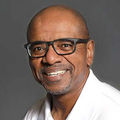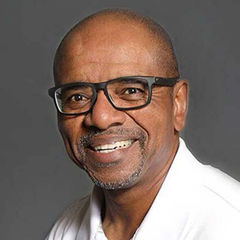ACE recently hosted a Facebook Live Conversation about how public health and exercise professionals can work with places of worship to improve fitness and wellness in Black communities.
The discussion was led by Antonio Williams, PhD, associate professor in the School of Public Health at Indiana University Bloomington and a member of the ACE Board of Directors. Joining him were Pamela Price, BS, RN, Deputy Director of The Balm in Gilead, and Ricky Martin, CEO of Fit-To-Go and Head Coach at Sports Backers.
Black churches are the centerpiece of Black culture and many social norms, and the panel agreed that churches can also be leveraged as a source of empowerment and community in a way that promotes holistic health—of body, mind and spirit.
Dr. Williams described the church as a “gatekeeper” that plays a critical role in how Black people look at themselves and even in how they see their bodies and the purpose of their bodies.
It’s important to note that not all Black churches are the same. As Price put it, “if you know one Black church, you know one Black church.” What she means is that you must be careful not to treat Black churches (which come in a variety of denominations), or the members of those churches, as a monolith. Within each church, you will meet people of different backgrounds, socioeconomic statuses and education levels, for example. Therefore, it’s essential that exercise professionals remain mindful of the fact that a church is made of individuals, all of whom should be treated as such.
The conversation centered on two key questions. First, how can the Black church become a driver of public health in the Black community? And second, how can exercise professionals lend their passion and expertise?
How can the Black church become a driver of public health in the Black community?
The most direct way Black churches can promote public health is by effectively using their platform of authority in the community. As Price explained, “We can hear our doctors or fitness instructors like Ricky or another public health professional like myself tell us about eating better, tell us about getting that 30 minutes of physical activity every day, but it resonates and hits harder if our bishop is saying that, as a congregation, we’re going to get healthy.”
Also, the Black church is a great example of meeting people where they are, quite literally. Churches are a gathering place, and they often have a large room that can be used to host events—including health fairs, group fitness classes and education sessions.
In reference to the name of the organization where she works—The Balm in Gilead—Price explained that Black churches, congregations and religious institutions—through partnership and collaboration—can be the balm that Black communities need to address health disparities.
The church leaders’ role can be as simple as encouraging people to bring healthy food options to the church picnic or pausing after 30 minutes of Wednesday night Bible study to stretch and march in place, or it can be as broad as hosting Diabetes Prevention Programs or healthy cooking classes.
The point is, the Black church is already a gathering place and a center of trust and community, so why not also make it a tool for improving the health and wellness of congregants?
How can exercise professionals lend their passion and expertise?
We in the fitness industry know that physical activity is a key element—a balm if you will—for improving community health, but the church leaders may not share that awareness.
One way that health coaches and exercise professionals—whether they are congregants at a particular Black church or not—can impact wellness in the community is by educating the leaders of the church about the role of physical activity and how they, as leaders, can make a positive impact. Also, fitness professionals can provide classes to teach both leaders and congregants about the ways in which physical activity improves one’s health. Remind them that praise and worship are forms of physical activity and that spiritual, mental and physical wellness are inextricably linked.
Martin attributes much of his success as a fitness professional to the intersection between Black churches and physical activity. He said simply, “Most of my clientele comes from the church.”
Williams, Martin and Price offered strategies to help exercise professionals make a positive impact on the health and wellness of members of Black churches.
- “Get in there,” said Martin. You have to go, visit and show your face. The people in the Black church, he says, want to get to know you and see if you’re for real.
- Be authentic. The importance of authenticity cannot be overstated, and the word became a touchstone throughout the conversation. Be yourself, speak and behave as you normally would, but make genuine connections out of a true desire to help members of the community get healthier. As Dr. Williams says, “It doesn’t matter what the color of your skin is, as long as you are genuine and tap into our culture, and you are really here to help and not pirate parts of our culture.”
- Offer something. Too often, conversations like this one center on how to expand your business by reaching into a new community of potential clients. Instead, offer a solution, whether it’s free education sessions or outdoor workouts in the church parking lot. The point is, be of service and arrive with a genuine desire to help shrink the health disparities in the Black community—and let the business side take care of itself.
- Be patient and, as Martin put it, “administer grace very liberally.” It can take time to get to know people and become a trusted part of the community. Also, you will likely be working with people of all health and fitness levels, so patience and grace are often required to bring them on board and get them moving.
- Help people reimagine what physical activity means. As Dr. Williams explained, some members of the black community, because of the type of work they do, don’t look at physical activity as a celebration of what their bodies can do, but as something that they hate to do—it’s just another form of work. Teach them that all movement counts, and that physical activity can be home-based or church-based and doesn’t need to be vigorous to drive meaningful results. Price said that this can be a matter of, “reimagining what physical activity means and what it means in the context of us as a community and the places in which we can be active.” And, it can be fun!
In Conclusion
The Black community experiences a number of alarming health disparities, including elevated rates of hypertension, diabetes and obesity, less access to health insurance, and an increased predisposition to COVID-19 and a number of cancers.
Black churches can and should be part of the solution. As Price said, “Our churches can do something about it. They just need to be supported by the right people, with the right resources, the right partnerships, the right collaborations.” In many ways, they are already doing this type of work, but what’s missing is scale, said Price. “We don’t do these things in the volume that we need to so that we don’t have these health disparities.”
Fitness and faith run parallel to one another in that they are both serving communities with a goal of improving wellness, so a collaboration between Church leadership and health and exercise professionals can do tremendous good.
“We’re all connected,” explained Price, “and everyone has some expertise. Everyone has some value that they can bring to the table. And the table is there, the table is set. We just have got to make sure we bring the right people.”




 by
by 









 by
by